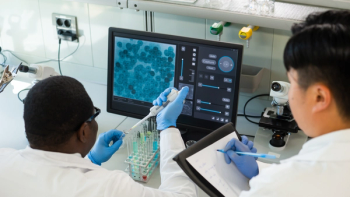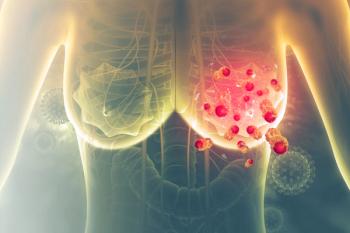Nabla Bio Enters $1 Billion Multi-Year Research Collaboration with Takeda
Key Takeaways
- Nabla Bio and Takeda's collaboration focuses on AI-driven protein therapeutics, leveraging the Joint Atomic Model (JAM) platform for de novo antibody design across early-stage programs.
- Nabla Bio is set to receive "double-digit millions" in upfront payments, with potential success-based payments exceeding $1 billion.
Nabla Bio and Takeda enhance their partnership to revolutionize AI-driven protein therapeutics, aiming for groundbreaking advancements in drug development.
Nabla Bio announced a new multi-year research collaboration with Takeda aiming to advance AI-driven design of protein therapeutics. This collaboration builds off the success of Nabla and Takeda’s initial partnership back in 2022.
“Since 2022, we’ve collaborated with Takeda to push the boundaries of next-generation biologics discovery,” said Surge Biswas, Ph.D., chief executive officer and co-founder of Nabla Bio. “This second collaboration builds on the success of our first program and reflects our shared conviction that de novo design and AI-driven optimization, powered by foundation models like JAM, can unlock entirely new therapeutic spaces and accelerate the development of new medicines at a scale and speed not seen before.”
What are the details of the collaboration?
Although specific terms of the collaboration have yet to be disclosed, Nabla Bio detailed in a press release that it is expected to receive “double-digit millions” in upfront and research cost payments, while also being granted eligibility to receive success-based payments reaching upwards of $1 billion.1
The collaboration effort will utilize Nabla Bio’s proprietary biomolecular design platform, Joint Atomic Model (JAM), across Takeda’s early-stage development programs. The collaboration is also expected to include de novo design of antibodies in parallel for multiple targets, multispecifics, challenging targets, and other custom therapeutics.1 Currently, JAM displays double-digit success rates in de novo design across a wide range of targets, including generating picomolar binders to difficult target classes such as G protein-coupled receptors (GPCRs) in a true zero-shot setting.1 Paired with direct-to-function testing, JAM delivers functional antibodies such as GPCR agonists and complex biologics, including multispecifics and receptor decoys. Nabla’s AI designed therapeutics have demonstrated multiple preclinical properties, including function, pharmacokinetics/pharmacodynamics, and low immunogenicity in non-human primates.1
Takeda’s statement on the collaboration
“At Takeda, we are accelerating drug development by leveraging the latest advances in AI,” said Chris Arendt, Ph.D., chief scientific officer and head of research at Takeda. “Building upon the success of our first engagement with Nabla Bio, this collaboration applies their cutting-edge AI and wet lab to help us design and optimize protein therapeutics for applications across our therapeutic areas.”
Takeda’s recent decision to discontinue its cell therapy research
Earlier in October of this year, Takeda announced its decision to
Nabla and Takeda’s collaboration isn’t the first collaboration based on AI in the pharmaceutical industry, as earlier this month AstraZeneca and Algen Biotechnologies
Sources
- Nabla Bio Signs Second Takeda Collaboration to Advance AI-Driven Design of Protein Therapeutics Nabla Bio October 14,2025
https://www.businesswire.com/news/home/20251014934240/en/Nabla-Bio-Signs-Second-Takeda-Collaboration-to-Advance-AI-Driven-Design-of-Protein-Therapeutics
Newsletter
Lead with insight with the Pharmaceutical Executive newsletter, featuring strategic analysis, leadership trends, and market intelligence for biopharma decision-makers.





